I want to eliminate/clamp the inductive kickback that would result from turning off a large inductor, such as a relay or a transformer.
In a DC circuit, I would use a diode to flywheel the current. But what do I use in a line voltage AC circuit?
Is an MOV an acceptable device to use? Should I connect it parallel with the inductor or parallel with the switch? MOVs fail closed circuit, so this could be a fire hazard. Fire safety is a very important consideration.
Or should I use a TVS or something else?
Please describe how the suppressor device should be connected to the circuit.
